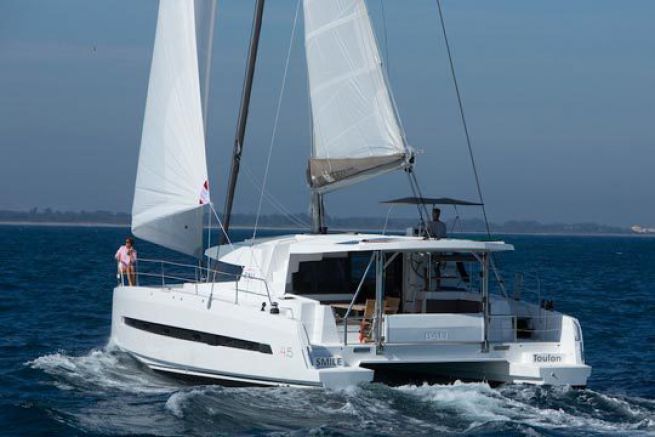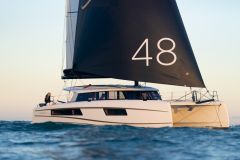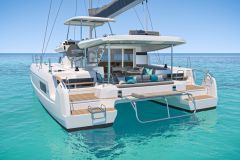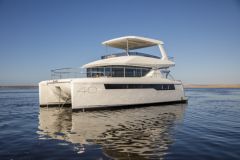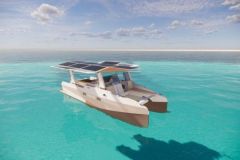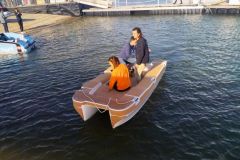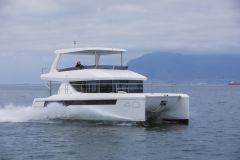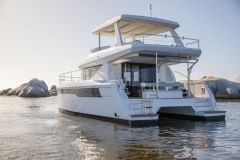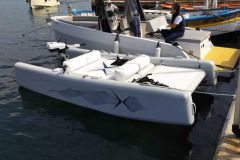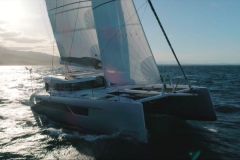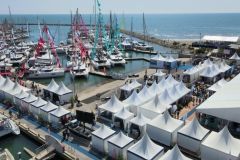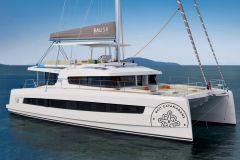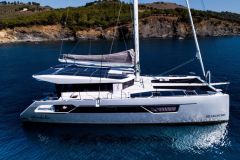The Catana shipyard launched this range of boats in response to a demand for sailboats for charter. The involvement of Dream Yacht Charter in defining the specifications is proof of this. Unlike the Catana range, Bali is designed as a vacation boat. No complicated maneuvers (forget the daggerboards, sign of performance), the trampoline at the bow replaced by a hard structure with a large cockpit, all sail maneuvers (there's still a bit left!) exported outside the cockpit so as not to disturb passengers.
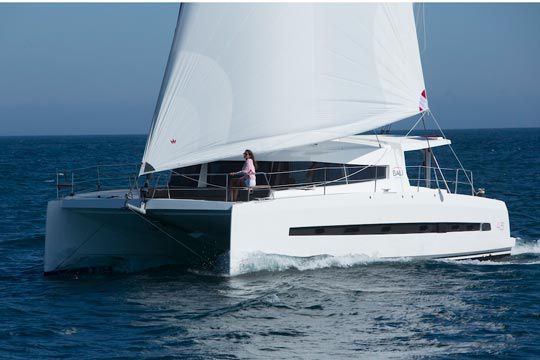
It's the location of the helm station that changes everything between the two boats. Not only in terms of the position of the skipper/captain, but also in terms of onboard organization. On the 4.3, the helm is above the deckhouse. Maneuvers are carried out directly from the mast foot in front of the helmsman, who has a full view of the whole boat, except for the stern, which remains hidden by the deckhouse. This makes harbor maneuvers easier, and when sailing under sail, you can keep an eye on the trimming. This layout frees up the entire underside of the deck. The architect was thus able to imagine a unique space that closes with a large rigid door (stowed under the roof in the open position). This huge bulkhead/door unit is operated by an electric motor. It's so easy! Sliding glass panels on the sides ensure closure. So, in just 2 minutes, the open cockpit becomes an integral part of the deckhouse.
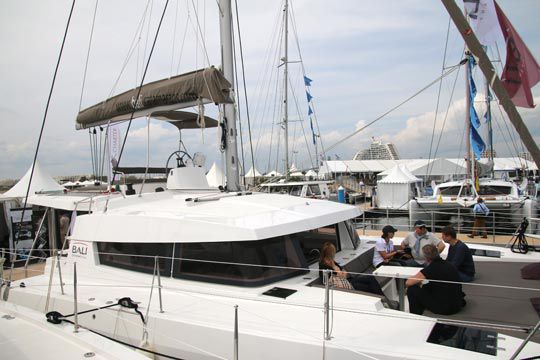
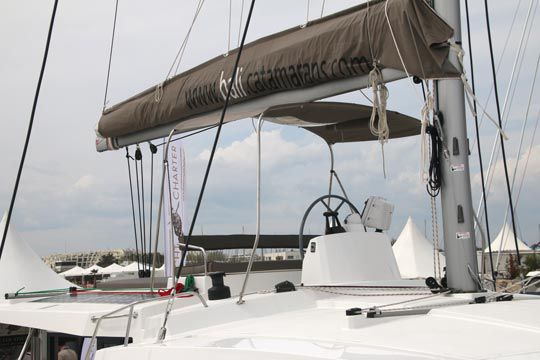
The downside of this high helm position is that the boom has to be raised above the helmsman. We haven't tried it, but we wonder how a crew will manage to furl the mainsail when it's time to lower the boat...
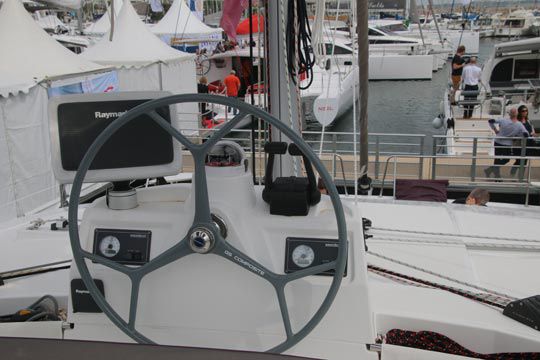
More traditional, bali 4.5 has two square tables with a partition separating the two. Although the opening hatch is completely retracted, giving a surprising idea of volume, this is a more classic layout. Similarly, the helm station remains at deck level on the starboard side. The boom is accessible from the deckhouse. It's also easier for the skipper to keep an eye on his crew while remaining at the helm. The Bali 4.5 remains more seaworthy than its little brother, limiting dunnage and avoiding the fishing-style perched helm station.
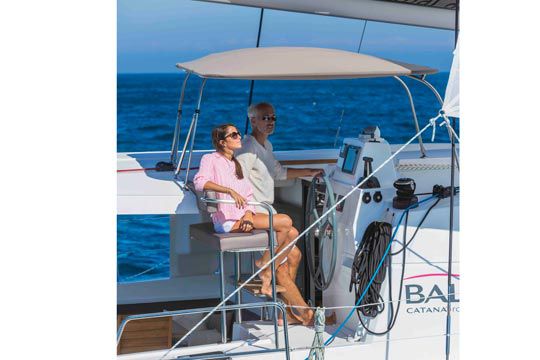
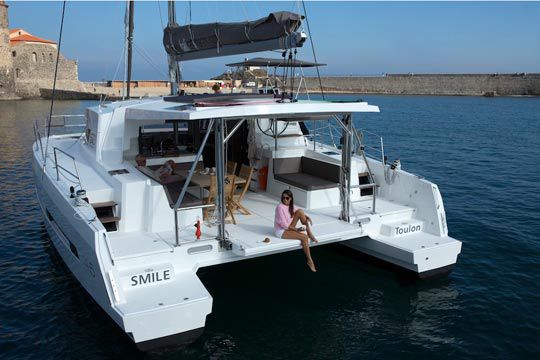
Apart from these two major organizational differences, these two boats share the same layout arguments. There's a 4-cabin version with 4 heads that's sure to please charterers. Ventilation has also been particularly well thought out, with numerous opening hull portholes and a large porthole in the deckhouse that ventilates the entire cabin and allows food to be passed to the forward cockpit. The foredeck is fitted out like a cockpit, with seating and tables. At the stern, between the two hulls, a tilting deck enlarges the floor area when at anchor. When underway, it folds up to act as a guardrail. Just aft, the tender is raised on a frame system, eliminating the need for a davit. A system invented and perfected by Leopard several years ago and copied here.
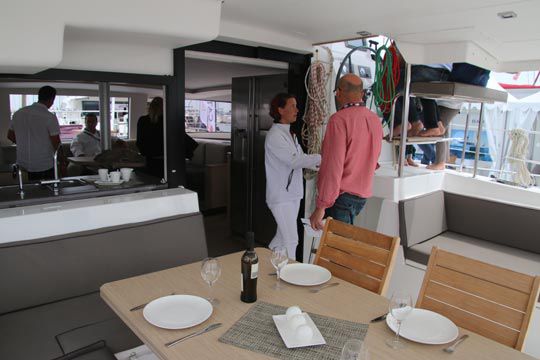
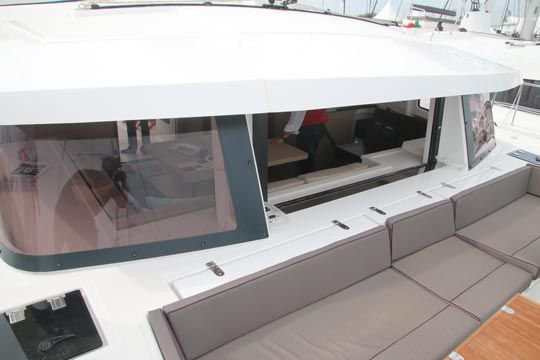
BALI 4.3
Naval architect: Xavier FA?
Interior design: Hervé COUEDEL
Overall length: 13.10 m
Waterline length: 12.60 m
Width: 7.12 m
Draft: 1.20 m
Light displacement: 10.2 t
Maximum load displacement: 14.25 t
Sail surface area: 93.9 m²
GV surface area: 54.6 m² (54.6 sq. ft.)
Solent: 37.5 m² (37.5 sq. ft.)
Fresh water: 800 l
Fuel : 800 l
Engines: 2 X 40 hp or 2 X 50 hp
CE category: A - 12 persons
BALI 4.5
Naval architect: Xavier FA?
Interior design: Hervé COUEDEL
Overall length: 13.60 m
Waterline length: 13 m
Width: 7.42 m
Draft: 1.22 m
Light displacement: 11.8 t
Maximum load displacement: 16.4 t
Sail surface area: 121 m²
GV surface area: 72 m² (72 sq. m.)
Self-tacking solent: 39 sq. m
Fresh water: 800 l
Fuel : 800 l
Engines: 2 X 40 hp or 2 X 50 hp
CE category: A - 12 persons
